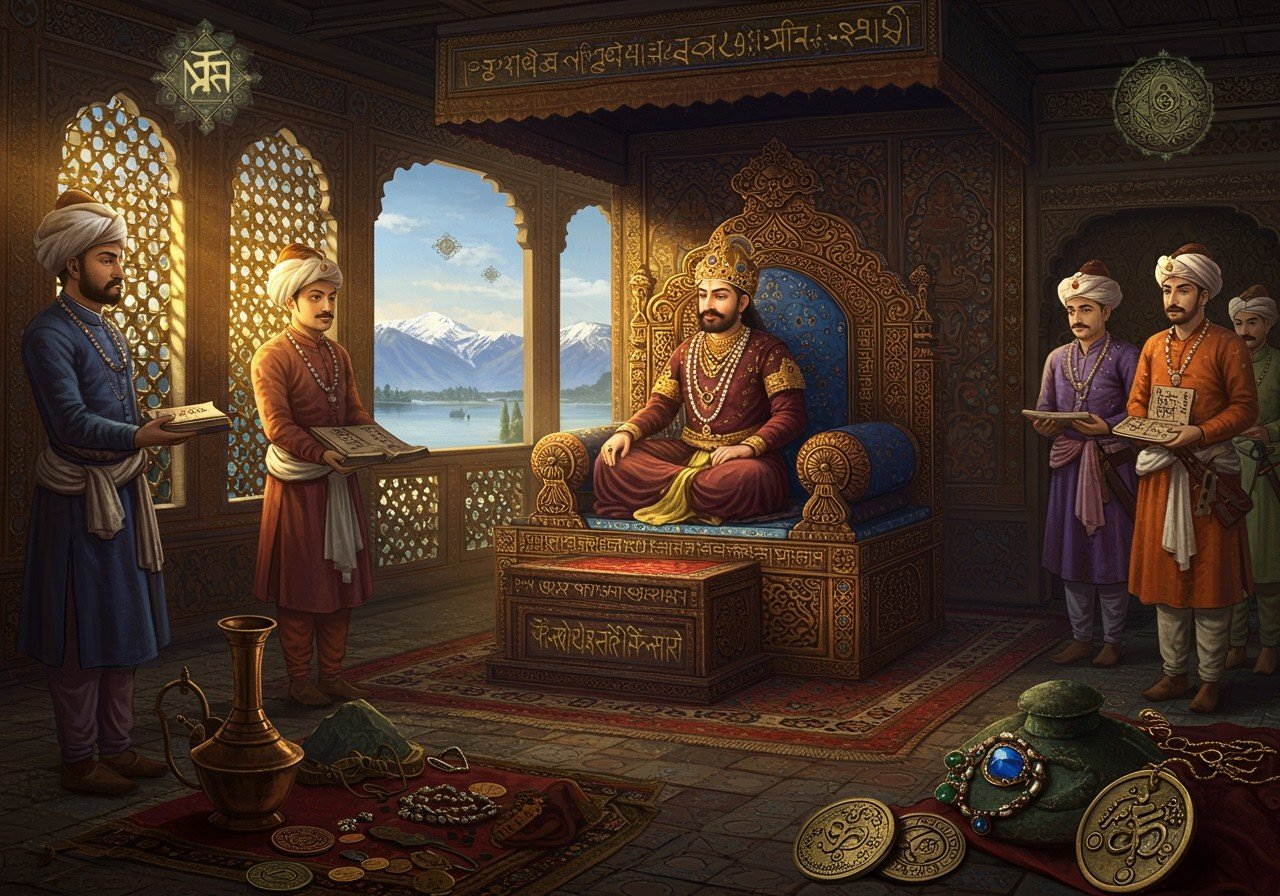
Embark on a historical exploration of the Lohara Dynasty, a pivotal era in medieval Kashmir. This insightful piece delves into the lineage of rulers who shaped the region, examining their governance, cultural impact, and eventual decline. This exploration is tailored for those with a deep appreciation for Indian heritage and historical accuracy.
The Rise of the Lohara Dynasty
The Lohara Dynasty’s inception is marked by the rise of Sangramaraja, a significant figure who laid the groundwork for his successors. His role in consolidating the kingdom was crucial, with Lohara, strategically located near the Pir Panjal range, serving as a vital political hub. This transition from the Utpala Dynasty to the Loharas occurred during a volatile socio-political climate, ushering in a new era of governance.
Prominent Figures of the Lohara Dynasty
Several rulers played key roles in shaping the Lohara Dynasty’s legacy:
- Sangramaraja: Known for his military prowess, Sangramaraja expanded the kingdom’s territories and secured its borders. His strategic decisions laid the foundation for the dynasty’s future expansion.
- King Harsha: A controversial yet influential figure, King Harsha oversaw significant cultural and economic growth. His reign was marked by both progress and internal conflicts.
- Queen Didda: A powerful and astute ruler, Queen Didda demonstrated exceptional political acumen and strategic thinking. Her influence extended beyond her own reign, impacting subsequent rulers.
While these rulers are prominent, other lesser-known figures contributed to the kingdom’s stability and continuity.
Cultural and Economic Flourishing Under the Loharas
The Lohara Dynasty witnessed a flourishing of culture and economic activity:
- Artistic Patronage and Architectural Marvels: The Lohara rulers were patrons of art, literature, and architecture, commissioning magnificent temples and robust fortresses that stand as testaments to their reign. These structures reflect the dynasty’s artistic sensibilities and architectural prowess.
- Economic Strategies and Trade Routes: The dynasty implemented economic policies that fostered trade and commerce. Crucially, they developed and maintained trade routes linking Kashmir with Central Asia, leading to economic prosperity.
- Religious Harmony and Coexistence: A notable aspect of the Lohara Dynasty was its policy of religious tolerance. Different faiths coexisted peacefully, contributing to a rich and diverse cultural landscape.
Historical artifacts from this period offer tangible evidence of these cultural and economic achievements.
Military Tactics and Political Landscape
The Lohara rulers were adept at military strategy and navigated a complex political landscape:
- Warfare and Strategic Defense: The dynasty’s reign was marked by significant battles and strategic defense tactics. Their military prowess played a vital role in maintaining their territorial integrity.
- Fortifications and Geographic Advantage: The Loharas utilized fortresses and leveraged geographical advantages to their benefit. These strategic decisions were crucial in both defensive and offensive maneuvers.
- Alliances and Rivalries: The dynasty engaged in a web of alliances and rivalries with neighboring kingdoms. These political dynamics significantly influenced the stability and prosperity of the region.
The Decline of the Lohara Dynasty
Several factors contributed to the eventual decline of the Lohara Dynasty:
- Internal Conflicts and Instability: Internal strife weakened the dynasty’s power and created vulnerabilities.
- Weakening Leadership and Succession: Weak leadership and succession struggles further destabilized the kingdom.
- External Pressures and Invasions: Mounting external pressures and invasions exacerbated the internal weaknesses, ultimately leading to the dynasty’s downfall.
Udayanadeva, the last ruler of the Lohara Dynasty, faced immense challenges during his reign. The dynasty’s decline marked a shift in power dynamics in Kashmir and paved the way for subsequent rulers. However, the legacy of the Lohara rulers continues to resonate in Kashmir’s historical narrative.
Connecting with Kashmir’s Heritage through Poojn.in
Poojn.in, India’s leading cultural goods and services store, offers a unique opportunity to connect with Kashmir’s rich heritage. As you delve into the history of the Lohara Dynasty, consider exploring our collection of authentic ritual items, reminiscent of those used during this significant era.
We offer a wide selection of premium puja items, including traditional cotton dhotis and sacred accessories, allowing you to experience the traditions of the past. Just as the Lohara rulers patronized the arts and culture, you too can participate in these rich traditions by incorporating authentic items into your spiritual practices.
Frequently Asked Questions about the Lohara Dynasty
Who established the Lohara Dynasty? The dynasty was founded by Kesar, a chieftain from the Lohara region.
Which rulers stand out in the Lohara Dynasty? Sangramaraja, Harsha, and Uccala are among the most prominent rulers.
What is the significance of Sangramaraja’s rule? Sangramaraja played a crucial role in consolidating the kingdom and expanding its territories through military campaigns.
Who was the last ruler of the Lohara Dynasty? Jayasimha was the last ruler of the Lohara Dynasty.
What led to the end of the Lohara Dynasty? A combination of internal strife and external invasions brought about the dynasty’s downfall.
What were Harsha’s contributions during his reign? Harsha was a patron of the arts and literature and implemented significant administrative reforms.
Where did the Lohara Dynasty rulers originate? The dynasty originated from the Lohara region, believed to be near present-day Poonch.
How did Uccala’s rule impact Kashmir? Uccala’s reign brought a period of relative stability and prosperity to Kashmir after a time of turmoil.
Concluding Thoughts
The Lohara Dynasty’s story is an integral part of Kashmir’s rich historical tapestry. From its rise under Sangramaraja to its decline under Jayasimha, the dynasty’s impact on the region’s culture, economy, and political landscape is undeniable. Exploring the Lohara era offers valuable insights into the complexities and nuances of Kashmir’s medieval period.
Further your understanding of this fascinating period by exploring related content on Poojn.in. Discover more about the Shankaracharya Temple, a significant spiritual site in Kashmir, and delve into the legacy of Shankaracharya’s temples across India. For those planning a visit, our guide on planning your trip to the Shankaracharya Temple provides valuable information. Learn about the historical and spiritual significance of the temple’s architecture, history, and spirituality, and explore the hidden cultural gems of Srinagar.


